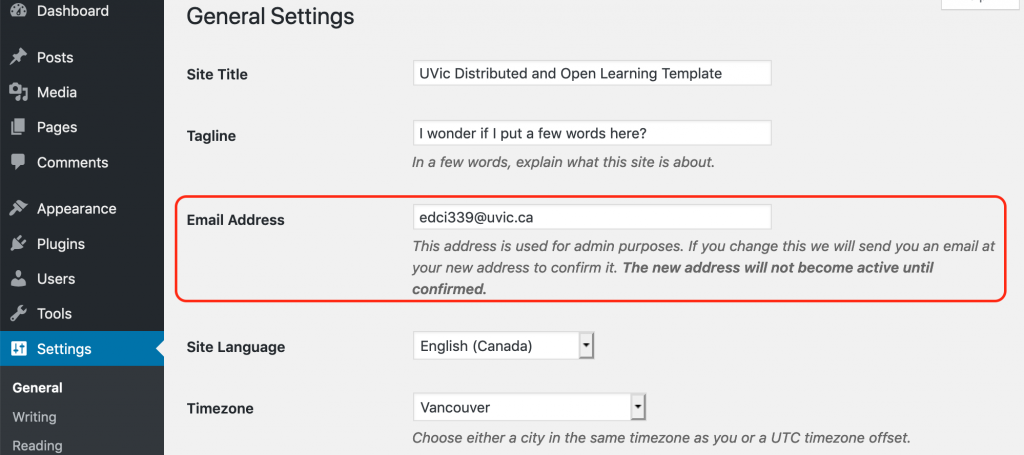What is a digital identity?
Someone’s digital identity is determined by their presence online. With that being said, what you post, share, how you are online, how you engage with others, and how you use the online tools is what mainly determines your online presence. Digital identity is your digital footprint and it is assessed by what you access on the world wide web. Based on what you search, view and access, it can contribute to your digital footprint in a positive way, or in a negative way. This is why employers access your digital identity before they meet candidates for jobs as they can get a firm understanding of someone based on their social media presence. Keeping this information in mind is extremely important as it is often easy to impact your digital identity negatively by posting pictures or content that is seen as offensive or negative.
How do personal versus professional approaches to digital identity affect social media use?
When accessing social media, it should be used vastly differently when used personally versus professionally. Personal social media can be used casually as it is mainly used for entertainment, to pass time, to be connected with your peers, and to socialize. The usage of social media personally is intended for friends and family to see what you are up to, what your interests are, and to share information. One rule of thumb for the personal use of social media should be to always make sure that whatever you are posting is reasonable for your grandma to see. Making a fool of yourself online by posting negative or offensive content not only will impact you negatively from your friends and family, but you can also offend others in society.
Professional usage of social media is very uniform as it isn’t used the same way as a personal social media account. When using social media professionally, it should solely be used to connect with others, search for job opportunities, and make a skillful identity. Avoiding posting things such as what you got up to for the weekend, or what your favorite place to go out for drinks is, can keep your profile at a high standard. Maintaining a professional appearance online is extremely important, as it is crucial to not mistake your personal life with your professional life.
How do digital identities converge in networked publics-what are the impacts and/or benefits?
With there being such a variety of social media platforms, our digital identity is determined by what we access and search while on the world wide web. Social media platforms such as Facebook, Instagram, Twitter, and various others are known to group individuals with alike opinions. By connecting people with alike digital identities, it creates a personalized learning network (PLN). Often, communicating with others who are like-minded is a positive thing as others can give you feedback on certain topics. On the contrary, having a PLN with individuals like-minded creates an echo chamber. Having an echo chamber in public networks can be negative as at times you will be only getting one opinion. An example of an echo chamber in my personal life is how my inner circle of friends influenced me to get a dirt bike this past summer. By me consistently being around my friends and hearing them talk about how they love being out in the trails, I found myself impulse buying a dirt bike. Even though I knew how my parents were completely against me investing in one, the thought of me missing out on being with the peers in my PLN, I still found myself getting a bike regardless.
Can a digital wallet provide trust in networked publics?
Digital wallets are a new feature on our phones that are becoming more and more common. Personally, I have both my debit and credit card available on my phone to access whenever I need to purchase something. At times, I have questioned the reliability of having a digital wallet as it seems like anyone who picks up your phone can access your cards with the touch of a button. Although at times it seems relatively easy to access these accounts, it is a lot more secure using digital wallets than anticipated.
It is said by the website credit card genius that digital wallets are in fact more secure than using your physical wallet. The reason why it is more secure is because with all cards in today’s society having the ability to tap for purchase, there is little to no security on your cards now. On the other hand, your phone requires you to constantly enter your passcode, or scan your face/thumb to allow you to access your cards. The tap feature can save a lot of time and is very convenient, but if you were to ever lose your wallet, it is necessary to cancel all of your cards as soon as possible. That is another benefit of having a mobile wallet, if you were to ever lose your phone, you wouldn’t have to worry about others using your phone to access your bank accounts.
References:
Stoller, Eric. “What is Digital Identity?” YouTube, uploaded by University of Derby, 25 Nov 2016, https://www.youtube.com/watch?v=u0RryRbJza0&feature=youtu.be. Accessed 01 Mar 2021
Personal vs. Professional Social Networks. (2017, March 10). Personal vs. professional social networks. https://theundercoverrecruiter.com/personal-vs-professional-networks/#:~:text=People%20use%20personal%20networks%20to,affairs%20updates%20on%20professional%20networks.
Spracklen, K. (2015). Identity-Making and Social Media. Springer Link. https://link.springer.com/chapter/10.1057/9781137405876_6.
Genius, C. C. (2021, February 5). creditcardGenius. https://creditcardgenius.ca/blog/best-digital-wallets.





